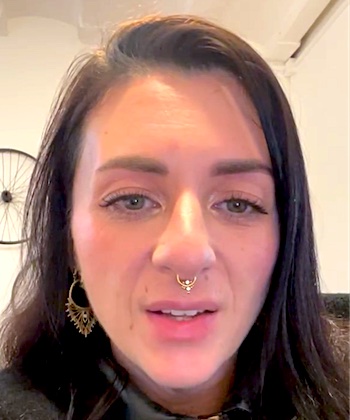
Bioluminescent plankton
Raffaella (
Switzerland
 )
)


The magic of bioluminescent plankton on a beach – Raffaella’s goosebump moment
“Hello! I am Raffaella, I come from Switzerland. My goosebump moment is when I went to Mexico last year in October. So, I went to this island called Holbox, that it is not far from Cancun, and I booked this trip to see the plankton and basically, I was super emotional. First of all because I was in Holbox. Holbox is just like a paradise. So, I was already as I said very emotional, and then when I went to this trip to see the plankton. It was during the night, it was like 4 AM, and then oh my god it was amazing! So basically, you walk in the water and then you see all these planktons, blue ones that are just like around you, and so you feel like, it is dark with all of this blue light, it is just amazing. I really suggest you, if you can go there once in your life, do it, and you actually will feel what I felt, like amazing really!”
A gift of nature
Some beaches in the world are a sighting point for bioluminescent plankton, a phenomenon that leaves the sea with a bright blue glow and that every year attracts hundreds of curious people hoping to witness a gift of nature that, however, is not so easy to see.
Only those who persevere and cultivate patience will be able to see the sea as they have never seen it before. This striking phenomenon is caused by a bioluminescent plankton algae that contains a chemical called luciferin, which glows when it comes into contact with oxygen.
It occurs when the algae detect gross movements in the water, sensing danger, and react by releasing this glowing substance to attract the attention of the fish to take care of any possible crustacean that might want to kill them.
As a result, the sea water is dyed a bright electric blue color that can be seen from about 100 meters from the shore.
Why does the phenomenon occur?
The phenomenon occurs due to the presence of an algae called Noctiluca scintillans, also known as “sea sparkle”, which is responsible for causing these flashes of light.
This fascinating phenomenon allows visitors to dive into a sea that seems to be full of tiny stars and enjoy a magical spectacle. When the water currents are strong enough, the plankton can even cover the very shore of Baru’s beaches.
There are few places in the world where this peculiar phenomenon can be observed. In the Caribbean, however, this natural wonder can be witnessed in La Laguna Luminous in Jamaica and Puerto Rico, in La Laguna Grande de Fajardo and in Mosquito Bay located in Vieques Island. It has also occurred in Mexico and off the coast of Wales.
Bioluminescence
Bioluminescence is defined as the emission of light produced by organisms through various types of biochemical reactions. The word bioluminescence comes from bios (Greek for life) and lumen (Latin for light). Some organisms, such as insects, use it as an effective means of securing mating.
It is speculated that others use it as a protection mechanism against predators. On some islands it is common that we can observe this phenomenon, but only in some bays and lagoons can we see this event consistently throughout the year.
Bioluminescence is seen in insects, coelenterates, mollusks, cephalopods, fungi, bacteria, fish, echinoderms, and dinoflagellates.
From an ecological point of view, bioluminescent bodies of water are important sources of primary and secondary production in the food chain. Also from the economic perspective, the bioluminescence phenomenon contributes significantly to the ecotourism industry.
There are 15 bioluminescent bays in the world, and of these there are 4 where it is recurrently observed in Puerto Rico (Bahía Bioluminiscente-Lajas, Laguna Monsio José-Lajas, Puerto Mosquito-Vieques, and Laguna Grande-Fajardo).
More about bioluminescent plankton on a beach:

Rate This Goosebump Moment